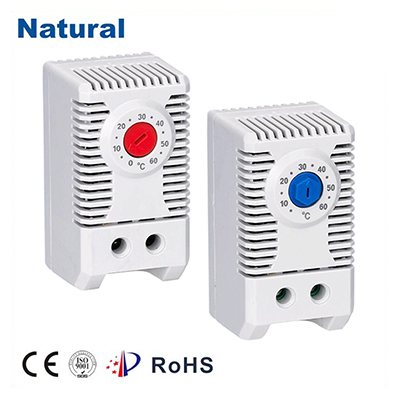文章:

In the realm of temperature control, precision and efficiency are paramount. Whether it’s in your home, your car, or industrial machinery, maintaining the desired temperature is essential for the smooth operation of various systems. One crucial component that plays a pivotal role in temperature regulation is the bimetal thermostat. What is a Bimetal Thermostat? A bimetal thermostat is a device designed to control temperature by utilizing the unique properties of bimetallic strips. These strips are composed of two different metals bonded together, each with its coefficient of thermal expansion. When exposed to temperature changes, the metals expand or contract at different rates, causing the strip to bend. The Working Principle The working principle of a bimetal thermostat is elegantly simple. As the temperature in its vicinity rises or falls, the bimetallic strip within the thermostat flexes accordingly. This mechanical movement is then leveraged to control various functions. Let’s take a closer look at how it works: Contact Mechanism: Bimetal thermostats employ a contact mechanism that opens or closes electrical circuits based on temperature changes. When the temperature reaches a predetermined setpoint, the bimetal strip deflects, causing the contacts to open or close. This action can activate or deactivate heating or cooling systems, making it an indispensable component in climate control. Safety Features: Bimetal thermostats are also widely used in safety applications. In scenarios where excessive heat poses a danger, such as in appliances or industrial equipment, a bimetal thermostat can serve as a failsafe. When a critical temperature is reached, it can trigger an emergency shutdown to prevent damage or fires. Applications The versatility of bimetal thermostats makes them essential in various industries and applications: Household Appliances: Bimetal thermostats are commonly found in household appliances like ovens, refrigerators, and irons. They help maintain the desired temperature while ensuring safety and energy efficiency. HVAC Systems: Heating, ventilation, and air conditioning systems rely on bimetal thermostats to regulate temperature in homes, offices, and industrial facilities. These devices are responsible for maintaining comfort and energy efficiency. Automotive: In the automotive industry, bimetal thermostats control the temperature of the engine coolant. This crucial component prevents overheating and ensures optimal engine performance. Industrial Processes: In industrial settings, bimetal thermostats are employed to control temperature in chemical reactors, furnaces, and other equipment, guaranteeing process reliability and product quality. Advantages of Bimetal Thermostats Bimetal thermostats offer several advantages over other temperature control methods: Reliability: They have a long service life and can withstand harsh conditions. Cost-Effective: Bimetal thermostats are cost-effective solutions for precise temperature control. Energy Efficiency: They help reduce energy consumption by ensuring that heating and cooling systems operate only when needed. Safety: Their ability to trigger safety mechanisms makes them invaluable in preventing overheating accidents. Challenges and Innovations While bimetal thermostats are reliable and cost-effective, they are not without limitations. One challenge is their relatively slower response time compared to digital or electronic temperature control systems. To address this, some manufacturers have introduced hybrid designs that combine the benefits of bimetallic strips with electronic components, offering faster response times without compromising reliability. Conclusion In the world of temperature control, bimetal thermostats continue to play a vital role in ensuring precision and efficiency. Their simplicity, reliability, and cost-effectiveness make them indispensable in a wide range of applications, from household appliances to industrial processes. As technology advances, these devices are likely to continue evolving to meet the ever-growing demands of temperature regulation in an increasingly complex world.